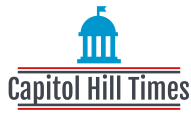Here is Judge Stranch’s majority opinion. It all begins here:
America was hit by the COVID-19 pandemic, which has caused more than 800,000 deaths, disrupted work and threatened the economy. American workers struggled throughout the crisis to stay afloat financially, and were desperate to get back on their feet. Even with better testing and access to vaccines, the virus continues to rage, evolving into new variants that pose new dangers. Employers and workers have been looking for new ways to create a safe and healthy workplace. Employers sought guidance from the Occupational Safety and Health Administration (OSHA) to help them protect their workers against COVID-19 while reopening businesses. This federal agency is responsible for ensuring a healthy and safe workplace. OSHA published an EmergencyTemporary Standards (ETS) on November 5, 2021 to help protect employees’ health and prevent the spread of the virus. ETS mandates that all employees receive a vaccine or wear protective eyewear and undergo weekly testing. However, employers can choose which policy is most appropriate for their organization. In an opinion published on November 12, the U.S. Court of Appeals, Fifth Circuit, reaffirmed its decision to suspend the ETS until judicial review was completed. U.S.C. § 2112(a)(3), petitions challenging the ETS—filed in Circuits across the nation—were consolidated into this court. We are authorized to act under the 28 U.S.C. § 2112(a)(4), we DISSOLVE The Fifth Circuit issued a stay for these reasons.
Judge Gibbons wrote an opinion concurring in the matter, and then wrote an ode. Chevron:
While reasonable minds might disagree about OSHA’s pandemic response, we don’t substitute for OSHA. Congress has given OSHA policy-making responsibility. See Charles D. Bonnano Linen Serv., Inc. v. NLRB, 454 U.S. 404, 418 (1982). “This limitation, which is mandated by the Constitution, separates our branch and our political co-branches.[F]ederal judges—who have no constituency—have a duty to respect legitimate policy choices made by those who do.” Chevron, U.S.A., Inc. v. NRDC, Inc., 467 U.S. 837, 866 (1984). The work of an agency is sometimes scientific and technical, but we aren’t able to control it. Kisor v. Wilkie, 139 S. Ct. 2400, 2413 (2019).
It is our sole responsibility to find out if OSHA has likely followed the Constitution’s statutory guidelines. It has likely done so. I agree.
Judge Larsen wrote 20 pages of a dissent. The following is the beginning:
We were reminded by the Supreme Court that agencies cannot act illegally, even if they are pursuing desirable ends. Ala. Ass’n of Realtors v. Dep’t of Health & Hum. Servs., 141 S. Ct. 2485, 2490 (2021). It is the consensus of the majority that health science and policy questions are outside the jurisdiction of the courts. I’m in agreement. However, this case poses a question legal: Was Congress authorizing the agency to take the action? Federal courts are primarily concerned with this question. The case can be solved using both the statutory interpretative tools and administrative laws’ bedrock principles. These indicate that the petitioners have a good chance of succeeding on their merits. I therefore recommend to OSHA not to issue an emergency rule while final review is completed.
Judge Larsen had originally voted for the case to be heard en banc. We can see that Judge Griffin (who was not on this panel) agreed to not go en banc.

